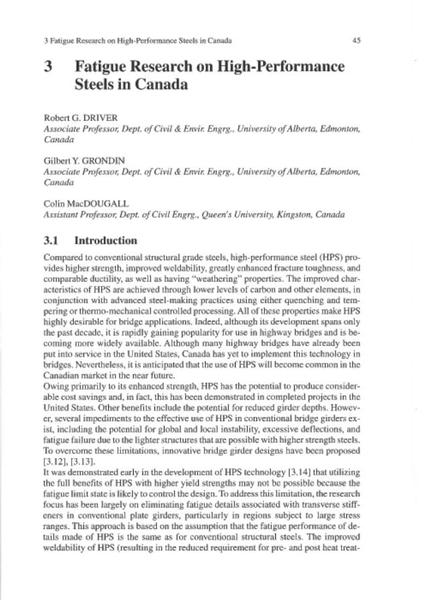Fatigue Research on High-Performance Steels in Canada

|
|
|||||||||||
Bibliographic Details
| Author(s): |
Robert G. Driver
Gilbert Y. Grondin Colin MacDougall |
||||
|---|---|---|---|---|---|
| Medium: | book chapter | ||||
| Language(s): | English | ||||
| Published in: | Use and Application of High-Performance Steels for Steel Structures | ||||
|
|||||
| Page(s): | 45-56 | ||||
| Total no. of pages: | 11 | ||||
| Year: | 2005 | ||||
| DOI: | 10.2749/sed008.045 | ||||
| Abstract: |
Compared to conventional structural grade steels, high-performance steel (HPS) provides higher strength, improved weldability, greatly enhanced fracture toughness, and comparable ductility, as well as having "weathering" properties. The improved characteristics of HPS are achieved through lower levels of carbon and other elements, in conjunction with advanced steel-making practices using either quenching and tempering or thermo-mechanical controlled processing. All of these properties make HPS highly desirable for bridge applications. Indeed, although its development spans only the past decade, it is rapidly gaining popularity for use in highway bridges and is becoming more widely available. Although many highway bridges have already been put into service in the United States, Canada has yet to implement this technology in bridges. Nevertheless, it is anticipated that the use ofHPS will become common in the Canadian market in the near future. |
||||
| Keywords: |
high-performance steel Canada
|
||||
